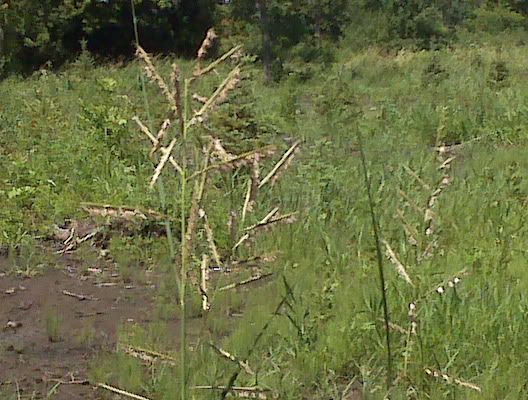

You are using an out of date browser. It may not display this or other websites correctly.
You should upgrade or use an alternative browser.
You should upgrade or use an alternative browser.
dbltree
Super Moderator
Is this PCG?
If it is...it looks different then mine? My PCG is long "ropey" seed heads that don't spread apart like in that pic? I'll try and take some more pics of mine.
Hey Dbltree,
What brand was that native grass hand broadcast seeder you use?
Never mind I found it. Truax right. Let me know if that is still your favorite.
Yes...Truax is the only fluffy seeder that I am aware and although heavy and cumbersome it works very well! :way:
Ridgerunner
New Member
Crp
I plan to put in approx 24 acres of CP2 next spring. Consisting of switch, BB, IG & Flowers The land is currently in corn. I have had the stalks baled and removed and plan to rent a truax drill from fish and wildlife. My question is could I use oust this fall yet or prior to planting next spring. Atrazine is out because of its damage to the flowers and journey will damage the switch. Do I have any other herbicide program options in my case.
I plan to put in approx 24 acres of CP2 next spring. Consisting of switch, BB, IG & Flowers The land is currently in corn. I have had the stalks baled and removed and plan to rent a truax drill from fish and wildlife. My question is could I use oust this fall yet or prior to planting next spring. Atrazine is out because of its damage to the flowers and journey will damage the switch. Do I have any other herbicide program options in my case.
dbltree
Super Moderator
I plan to put in approx 24 acres of CP2 next spring. Consisting of switch, BB, IG & Flowers The land is currently in corn. I have had the stalks baled and removed and plan to rent a truax drill from fish and wildlife. My question is could I use oust this fall yet or prior to planting next spring. Atrazine is out because of its damage to the flowers and journey will damage the switch. Do I have any other herbicide program options in my case.
Plateau/Panoramic is the best bet for nixed NWSG plantings and I have John Osenbaugh package the switch and non-tolerant forbs separately and then frost seen them the following winter.
Check the first page of this thread for more detailed info on herbicides...:way:
dbltree
Super Moderator
Commonly NWSG is planted on brome or fescue sod here in Iowa but when there are CRP sign ups then usually the seedings are done on crop lands. In those cases half the battle is already won because there is no sod to kill (one of the MOST important steps in preparing for NWSG plantings), soybean stubble is of course ideal because the soil surface is clean and seed can be broadcast or drilled.
Corn stubble is a close second because even though it looks "trashy" there is plenty of soil surface exposed and perennial sod grasses non-existent.
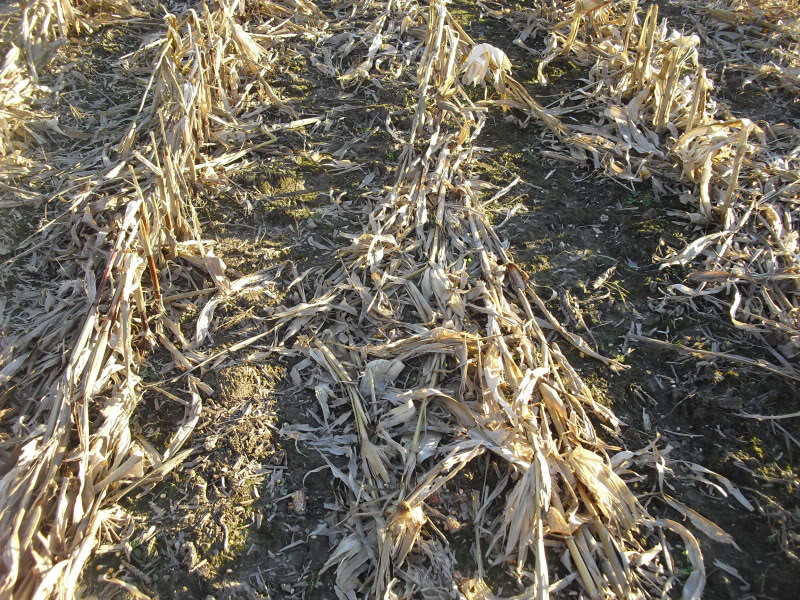
I'll be using a Truax no-till drill to dormant seed a NWSG mix in early December, although a drill is certainly not necessary. So I shredded part of the field and left the other part to share the difference if any at a later date. In the end other then for ease of running equipment there is usually no difference in the stand itself.
The shredded stalks look like this right now...
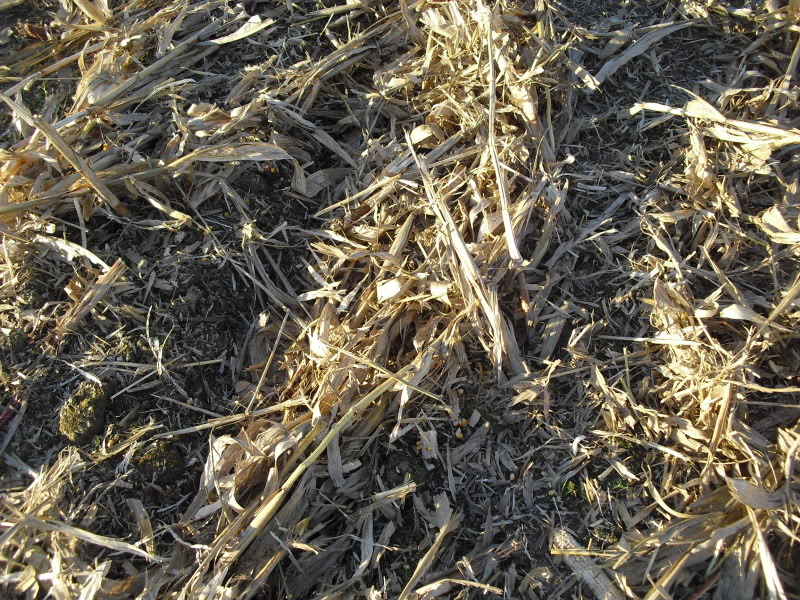
Something less often found when preparing for a NWSG planting is having to kill alfalfa or clover but in my case I had a 3 acre field of alfalfa that I had to kill. Alfalfa and clover are difficult to kill with glyphosate only and usually 2-4D is required.
I sprayed this three acre field with 6 quarts of 41% glyphosate and one gallon of 2-4D and it nuked everything!
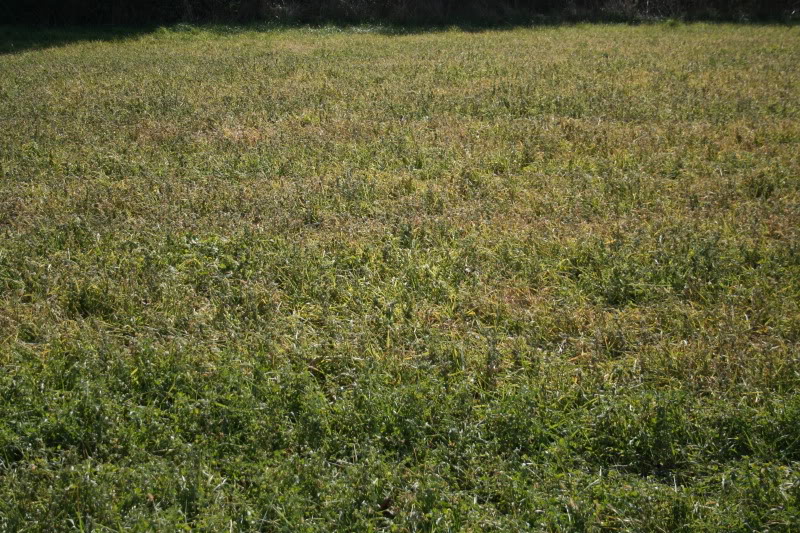
I hated to have to destroy this beautiful alfalfa stand so i waited until early November 1st to spray it because the weather was still warm yet it 100% killed the field.
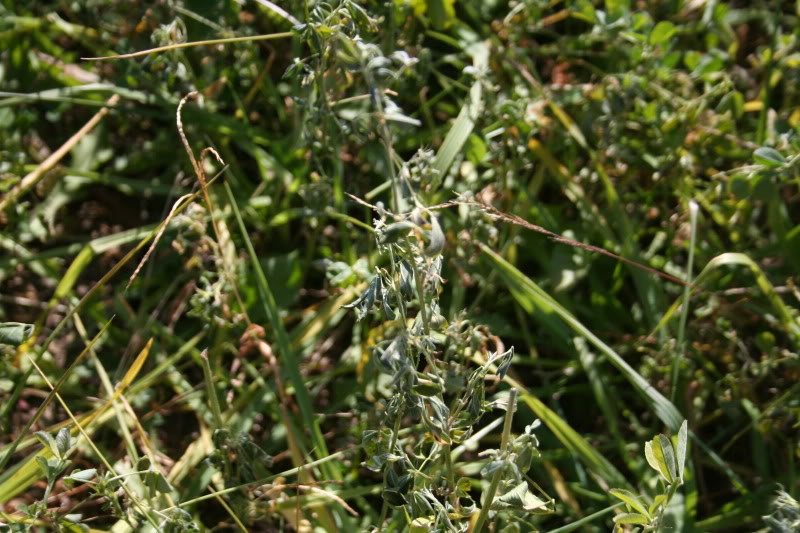
Preparation is the most important element in establishing a new stand of NWSG but as I have shared previously no tillage is necessary or advisable unless one has extremely rough field conditions. Not a single of square foot have I ever tilled for NWSG and yet they are all beautiful NWSG stands today.
In my case I'll be using Panoramic (Plateau) herbicide in the spring at 8 ounces per acre and this is one of the least expensive sources I know of...
Panoramic Herbicide source
On heavy soils Panoramic will cause minimal harm to switchgrass seedlings at 4 ounces per acre but at higher rates (which of course provide more effective weed control) this product can kill switch and many non-tolerant forbs. I had John Osenbaugh of Prairie Seed Farms keep any non-tolerant seeds separate and I will frost seed those the winter following, simple and easy method of getting around the "which herbicide" to use problem.
One can choose to simply clip weeds as needed and use no herbicides at all but it will take 2-3 years to establish the stand and the expense of mowing can exceed that of the herbicide which in this case will run around $16 an acre.
Dormant seeding in early December before heavy snows arrive is an extremely effective and low cost method of establishing native grasses and you can broadcast or drill seeds with equipment built for sowing fluffy seeds or in small fields simply scatter the seeds to the wind....easy as pie and a few years later it will be impossible to determine planting methods.
Drilling does have one advantage in that the seedlings can be "rowed" the following spring but remember the drill should not actually "plant" seeds as they should be no deeper then on top or 1/8" deep. A drill can be run across frozen soils and seeds simply placed on top and the no-till coulters will slice through stubble to insure seed/soil contact.
If you have a new CRP contract and CP-25 seeding to put in hopefully this information will give you some low cost yet effective establishment ideas....
Corn stubble is a close second because even though it looks "trashy" there is plenty of soil surface exposed and perennial sod grasses non-existent.

I'll be using a Truax no-till drill to dormant seed a NWSG mix in early December, although a drill is certainly not necessary. So I shredded part of the field and left the other part to share the difference if any at a later date. In the end other then for ease of running equipment there is usually no difference in the stand itself.
The shredded stalks look like this right now...

Something less often found when preparing for a NWSG planting is having to kill alfalfa or clover but in my case I had a 3 acre field of alfalfa that I had to kill. Alfalfa and clover are difficult to kill with glyphosate only and usually 2-4D is required.
I sprayed this three acre field with 6 quarts of 41% glyphosate and one gallon of 2-4D and it nuked everything!

I hated to have to destroy this beautiful alfalfa stand so i waited until early November 1st to spray it because the weather was still warm yet it 100% killed the field.

Preparation is the most important element in establishing a new stand of NWSG but as I have shared previously no tillage is necessary or advisable unless one has extremely rough field conditions. Not a single of square foot have I ever tilled for NWSG and yet they are all beautiful NWSG stands today.
In my case I'll be using Panoramic (Plateau) herbicide in the spring at 8 ounces per acre and this is one of the least expensive sources I know of...
Panoramic Herbicide source
On heavy soils Panoramic will cause minimal harm to switchgrass seedlings at 4 ounces per acre but at higher rates (which of course provide more effective weed control) this product can kill switch and many non-tolerant forbs. I had John Osenbaugh of Prairie Seed Farms keep any non-tolerant seeds separate and I will frost seed those the winter following, simple and easy method of getting around the "which herbicide" to use problem.
One can choose to simply clip weeds as needed and use no herbicides at all but it will take 2-3 years to establish the stand and the expense of mowing can exceed that of the herbicide which in this case will run around $16 an acre.
Dormant seeding in early December before heavy snows arrive is an extremely effective and low cost method of establishing native grasses and you can broadcast or drill seeds with equipment built for sowing fluffy seeds or in small fields simply scatter the seeds to the wind....easy as pie and a few years later it will be impossible to determine planting methods.
Drilling does have one advantage in that the seedlings can be "rowed" the following spring but remember the drill should not actually "plant" seeds as they should be no deeper then on top or 1/8" deep. A drill can be run across frozen soils and seeds simply placed on top and the no-till coulters will slice through stubble to insure seed/soil contact.
If you have a new CRP contract and CP-25 seeding to put in hopefully this information will give you some low cost yet effective establishment ideas....
Ridgerunner
New Member
Thanks DBLTREE that's very helpful info.
Nontypcl1
Member
Dbltree,
I believe I've heard you say that you prefer to frost seed over dormant seeding because the seed isn't left to the mercy of the mother nature as long. I was just wondering why this time around you've decided to dormant seed as opposed to frost seeding?
I also have some ground going into crp, CP23 actually. After being told is would be accepted, then not accepted, and now again told it is accepted. (no bull this time ) I am back to waiting for my plan to be finished so I can get started. I was told there are about 70 general contracts ahead of mine so hopefully they'll have it done in time for me to frost seed. Of course they really want it spring seeded but what they don't know won't hurt them
) I am back to waiting for my plan to be finished so I can get started. I was told there are about 70 general contracts ahead of mine so hopefully they'll have it done in time for me to frost seed. Of course they really want it spring seeded but what they don't know won't hurt them
I believe I've heard you say that you prefer to frost seed over dormant seeding because the seed isn't left to the mercy of the mother nature as long. I was just wondering why this time around you've decided to dormant seed as opposed to frost seeding?
I also have some ground going into crp, CP23 actually. After being told is would be accepted, then not accepted, and now again told it is accepted. (no bull this time
dbltree
Super Moderator
Dbltree,
I believe I've heard you say that you prefer to frost seed over dormant seeding because the seed isn't left to the mercy of the mother nature as long. I was just wondering why this time around you've decided to dormant seed as opposed to frost seeding?
I also have some ground going into crp, CP23 actually. After being told is would be accepted, then not accepted, and now again told it is accepted. (no bull this time) I am back to waiting for my plan to be finished so I can get started. I was told there are about 70 general contracts ahead of mine so hopefully they'll have it done in time for me to frost seed. Of course they really want it spring seeded but what they don't know won't hurt them

Over time...after I have witnessed more NWSG stands being established via early winter dormant seedings I have come to the realization that there is little difference in the end result especially for NWSG fluffy seed types.
As they say...probably 6 of one and 1/2 dozen of the other...
Early winter usually allows for easier access with a tractor and fluffy seed drill before heavy snows cause problems so we decided on that time frame this year.
If I was sowing only switchgrass I probably would choose late January/early February but the NWSG mix does very well dormant seeded in early December without all the worries about wet spring weather to contend with.
My NRCS tech is great and knows full well how successful dormant seedings are and readily approves of them....:way:
dbltree
Super Moderator
I always have to smile when I hear the "experts" say that switchgrass is too thick for wildlife to use and for that reason we ought to plant "mixed" NWSG like Indiangrass and Big Bluestem. Now I don't have a thing against mixed NWSG grasses and in fact have acres of them but the reasons and motives they are promoted over switch just don't make sense.
These photos are stands of primarily Indiangrass with some Big Bluestem and by golly folks....they are thicker then hair on a dogs back!

I guess none of those folks ever stumbled around in a thick robust stand of NWSG

or they couldn't possibly make a statement that these grasses were not as thick as switchgrass


In this photo there is actually switch in the foreground although hard to see because I had a telephoto lens on. The Indiangrass towers over the switchgrass and is just as thick or thicker. When winter snows come however the switch will out shine the other tall natives and bounce back when they do not.

I caught this buck sneaking through the Big Bluestem and you can see why they love the safety of the tall native grass
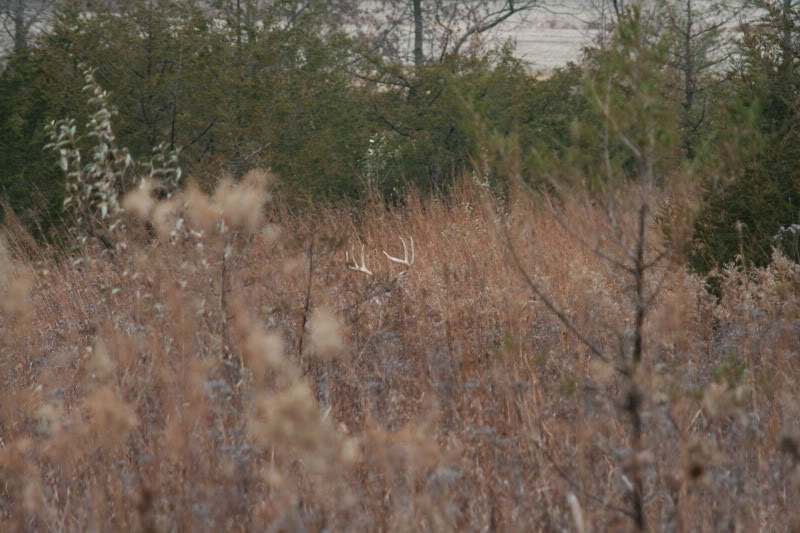
Only with a zoom lens can I "see" though the grass and get a better look at him

Large fields of NWSG can be extremely valuable in holding mature whitetails on your property but all NWSG's often do not "mix" well long term and one species will eventually dominate the others. Usually it's Indiangrass in my area and IG is the first to go down when rough weather hits and for that reason I maintain separate stands of pure switch and stands of mixed NWSG. This allows me to have diversity yet realistically maintain several species of native grasses on my farms long term and provide year around cover and screening for whitetails and wildlife in general....
These photos are stands of primarily Indiangrass with some Big Bluestem and by golly folks....they are thicker then hair on a dogs back!

I guess none of those folks ever stumbled around in a thick robust stand of NWSG

or they couldn't possibly make a statement that these grasses were not as thick as switchgrass


In this photo there is actually switch in the foreground although hard to see because I had a telephoto lens on. The Indiangrass towers over the switchgrass and is just as thick or thicker. When winter snows come however the switch will out shine the other tall natives and bounce back when they do not.

I caught this buck sneaking through the Big Bluestem and you can see why they love the safety of the tall native grass

Only with a zoom lens can I "see" though the grass and get a better look at him

Large fields of NWSG can be extremely valuable in holding mature whitetails on your property but all NWSG's often do not "mix" well long term and one species will eventually dominate the others. Usually it's Indiangrass in my area and IG is the first to go down when rough weather hits and for that reason I maintain separate stands of pure switch and stands of mixed NWSG. This allows me to have diversity yet realistically maintain several species of native grasses on my farms long term and provide year around cover and screening for whitetails and wildlife in general....
Nontypcl1
Member
I always have to smile when I hear the "experts" say that switchgrass is too thick for wildlife
Ya, I always like to argue that point with the NRCS guy in my area. I know him from school and like to give him a hard time anyways. Even still I still have a hard time convincing him that switch is good wildlife habitat for more than deer.
Oh well, He doesn't want to add switch to my CP-23 planting but somehow I imagine it will get in there anyways
dbltree
Super Moderator
December 13th, 2010
I was able to get my CP-25 NWSG mix dormant seeded on the ground I enrolled in the 2010 Conservation reserve program using a Truax no-till drill equipped to sow the fluffy seeds.

The native grass seeds won't flow through typical drills or broadcasters

The Truax drill and broadcasters are equipped with special augers and fingers to move the fluffy seeds and pull them down into the seed tubes.

This drill has three seed boxes...one for small seeds like switchgrass, clover and alfalfa, one for fluffy seeds and one for larger seeds like soybeans and peas

No-till coulters help cut through trash and allow coulters to drop seed on the soil surface

Soybean stubble is ideal to dormant seed NWSG because there is almost no surface trash at all but I also used this drill to sow into killed sod, killed alfalfa sod and cornstalks

Press wheels follow the seed openers to further press seeds against the soil

These are the sprocket settings I used to put on roughly 5 1/2 #'s of fluffy seed mix

This is the large seed box

and the tiny seed box

Easy to set here by "#'s per acre" to sow switchgrass seed for instance

This drill requires hydraulic outlets on the tractor, the back transport wheels can be raised and left up during planting.

A 40-60 HP tractor will do the trick

Broadcasting will work equally well but our County Conservation Board offers the Truax drill for $5 an acre so we chose that route for this seeding

There are other drills that will sow fluffy seeds but most drills are no equipped to sow fluffy seeds so be sure to find out for certain before renting or borrowing a drill to sow NWSG seeds. Switchgrass seed is free flowing and easily broadcast with almost any seeder or drill but Big Bluestem, Indiangrass and Little Bluestem are quite another story.
I still have additional acres to seed that I enrolled in Wetland Restoration through the Continuous CRP but some small dikes need to be put in first. I'll probably frost seed that in mid winter if I can get the dozing done by then....
I was able to get my CP-25 NWSG mix dormant seeded on the ground I enrolled in the 2010 Conservation reserve program using a Truax no-till drill equipped to sow the fluffy seeds.

The native grass seeds won't flow through typical drills or broadcasters

The Truax drill and broadcasters are equipped with special augers and fingers to move the fluffy seeds and pull them down into the seed tubes.

This drill has three seed boxes...one for small seeds like switchgrass, clover and alfalfa, one for fluffy seeds and one for larger seeds like soybeans and peas

No-till coulters help cut through trash and allow coulters to drop seed on the soil surface

Soybean stubble is ideal to dormant seed NWSG because there is almost no surface trash at all but I also used this drill to sow into killed sod, killed alfalfa sod and cornstalks

Press wheels follow the seed openers to further press seeds against the soil

These are the sprocket settings I used to put on roughly 5 1/2 #'s of fluffy seed mix

This is the large seed box

and the tiny seed box

Easy to set here by "#'s per acre" to sow switchgrass seed for instance

This drill requires hydraulic outlets on the tractor, the back transport wheels can be raised and left up during planting.

A 40-60 HP tractor will do the trick

Broadcasting will work equally well but our County Conservation Board offers the Truax drill for $5 an acre so we chose that route for this seeding

There are other drills that will sow fluffy seeds but most drills are no equipped to sow fluffy seeds so be sure to find out for certain before renting or borrowing a drill to sow NWSG seeds. Switchgrass seed is free flowing and easily broadcast with almost any seeder or drill but Big Bluestem, Indiangrass and Little Bluestem are quite another story.
I still have additional acres to seed that I enrolled in Wetland Restoration through the Continuous CRP but some small dikes need to be put in first. I'll probably frost seed that in mid winter if I can get the dozing done by then....
letemgrow
PMA Member
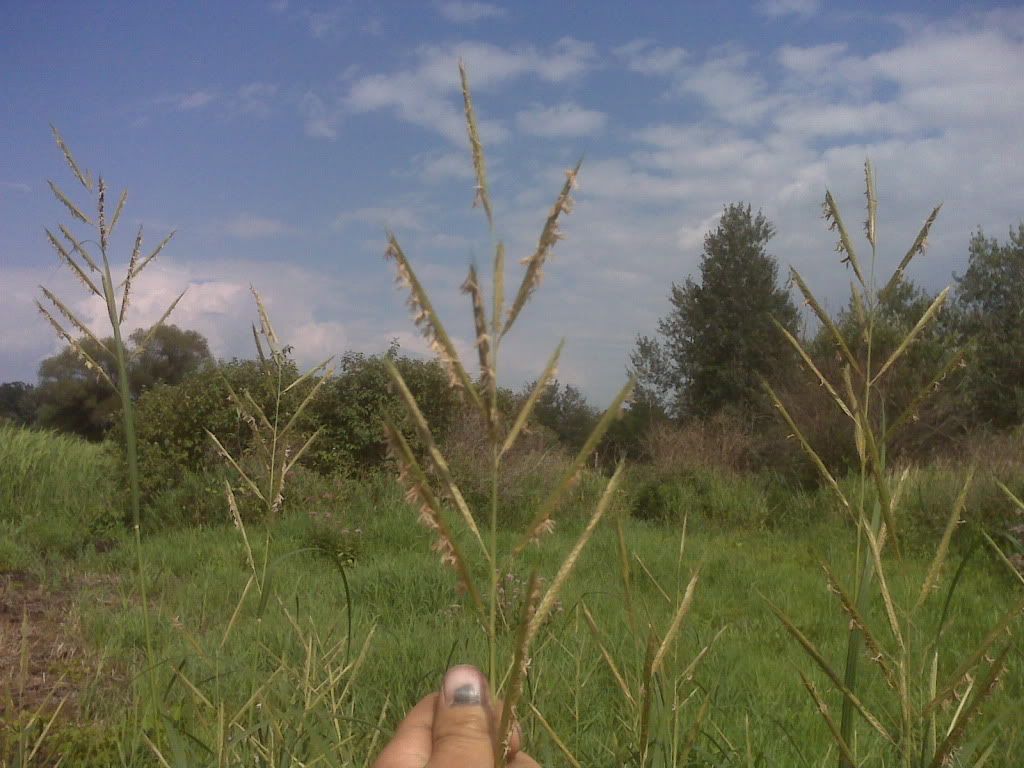
Is this PCG?
Sure looks like it to me, some I have seen have the seedheads more spread out like that.
dbltree
Super Moderator
Are the settings on that Truax run pretty true?
yep...pretty darn accurate
December 14th, 2010
The NWSG is still standing pretty well at my place...we have had snow but not heavy wet snow as of yet.

Be pretty easy to kill one by making a path or track through it such as where I have driven the tractor through mine.

Can you see deer in the tall natives? How many deer do you see here? (pics compliments of nannyslayer)
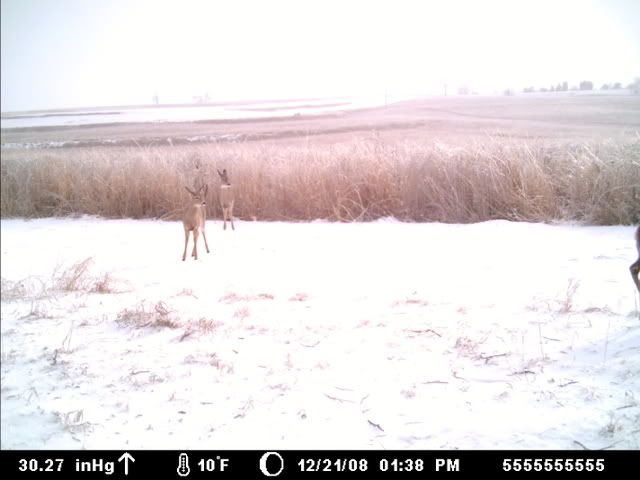
and one second later
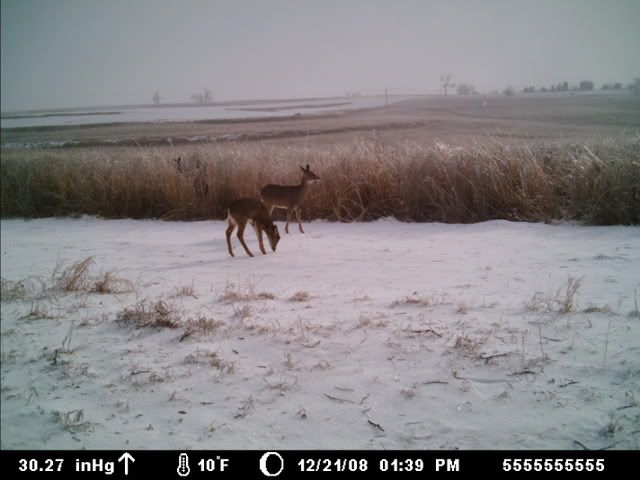
Are tall grasses really any good? Do bucks use them? A good friend of mine was shotgun hunting the other day and walked across a grassy field of only knee high grasses. Something caught his eye and he noticed an "antler" and being only 30 yards away he walked up on a bedded buck and killed him as he jumped from the bed.
Had that buck been in tall native grass...he wouldn't have walked through it and would never have seen the buck if he had. NWSG isn't the ultimate cover in the winter time but until heavy snows hit it's a great hiding place for mature whitetails....:way:
IQDM
New Member
NWSG isn't the ultimate cover in the winter time but until heavy snows hit it's a great hiding place for mature whitetails....:way:
In your opinion what is the best "winter" cover? (cedars, norway spruce, hinge cut timber, natives surrounded by pines, or a combo of some sort?)
dbltree
Super Moderator
In your opinion what is the best "winter" cover? (cedars, norway spruce, hinge cut timber, natives surrounded by pines, or a combo of some sort?)

The ultimate IMO is red cedars intermixed with shrubby cover and grassy areas....those areas are polluted with deer compared to any other types of cover.
letemgrow
PMA Member
The ultimate IMO is red cedars intermixed with shrubby cover and grassy areas....those areas are polluted with deer compared to any other types of cover.
That is my ideal winter mix too!! You have that on a south facing slope with some winter food sources close by and shooting your way out is the only option. :way:
Ridgerunner
New Member
I plan to seed 23 acres of NWSG next spring as part of a CRP planting. I have been looking around trying to find a truax no till drill for rent, but I have had no luck. I live in Southwest Wisconsin, if anyone has any leads for me in that area I would appreciate it.
Daver
PMA Member
I plan to seed 23 acres of NWSG next spring as part of a CRP planting. I have been looking around trying to find a truax no till drill for rent, but I have had no luck. I live in Southwest Wisconsin, if anyone has any leads for me in that area I would appreciate it.
Have you tried the local Pheasants Forever chapter?? Other than that I would think of county conservation organizations or maybe talk to a local seed dealer that might have one or more likely know of someone. Good luck.
I'd let you use mine 'cept I don't have one!
